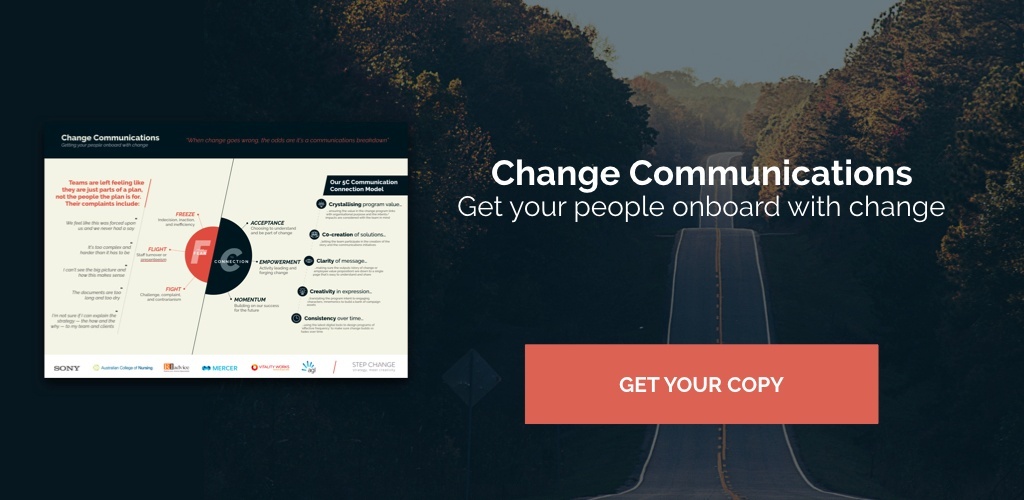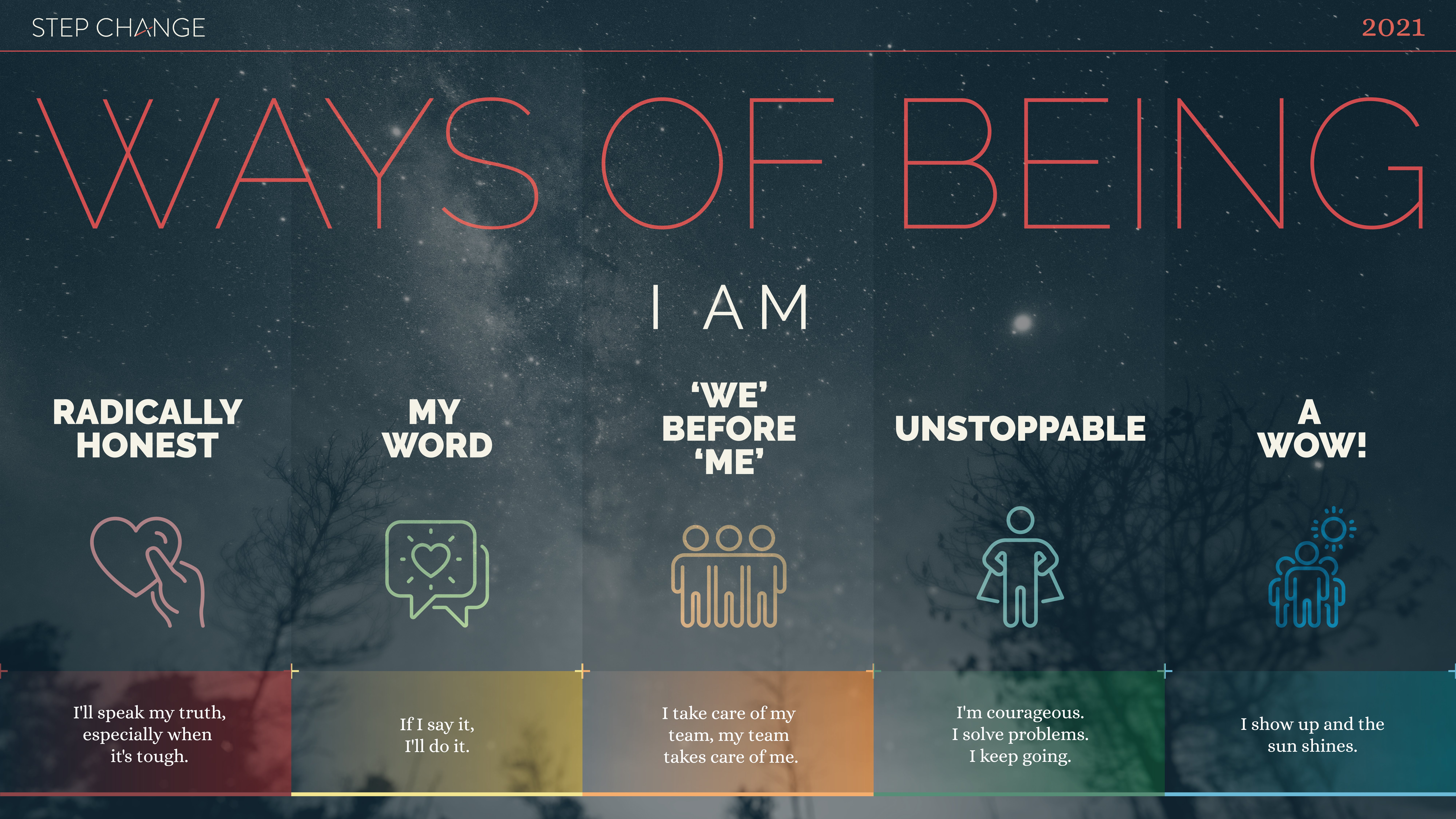The need to lead change is growing. But leaders who have done it before can attest that going through a transformation is a complicated process. Explore one of the key factors that helps leaders successfully lead transformations: change communications.
Insight: Change initiatives fail because there’s a lack of engagement from employees, not enough support from management, poor collaboration, and little accountability.
Data: 70% of change programs fail (McKinsey&Company).
Key Action Point: Apply the 5C Communication Connection Model to gain an edge in an evolving business landscape. Download your one-pager today.
Let’s begin by defining change management.
Change management refers to a company’s internal change processes: how the organisation initiates, analyses, and reacts to its change.
Managing change helps you to effectively retain control over the ways in which your organisation is transforming. The goal is to reduce disruption and improve the chances of success.
To implement and sustain change in a seamless manner, you need to be able to involve everyone in the organisation. A successful change initiative happens when everyone has a role to play and everyone supports and drives the change.
Modern organisations must be agile and willing to change, but it’s undeniable that change exacts a toll on employees. In fact, when something goes awry during the transformation, often, the issue is on communications.
Communicating Change: Strategies to Get Your Staff On Board
People hate change. Often, they are not sure as to how it will affect their day-to-day lives. It may be unclear whether the change will really have a positive impact on the company, and they may find themselves fatigued due to previous change efforts.
McKinsey&Company pointed out that 70% of change programs fail, and the main culprits are the following:
- Lack of staff involvement
- Inadequate support from the leaders
- Poor collaboration
- Little accountability
But when your employees are on board and engaged with your change initiative, the chances of being successful increase to 30%.
Below is a simple guide to help you lead change through effective communications. We call it our 5C Communication Connection Model:
- Crystallising Program Value
- Co-Creation of Solutions
- Clarity of Message
- Creativity in Expression
- Consistency over Time
Below is an overview of each.
1. Crystallising Program Value
The value in the change program should link with your company purpose. Consider the intents and impacts with your people in mind. Your change must align with your company’s goals, missions, and culture.
2. Co-Creation of Solutions
Let your team participate in the creation of the story as well as the communication initiatives. The more involvement they have, the more buy-in they will experience. At best, you can gain the most valuable and unique insights from them.
3. Clarity of Message
Ensure that the story of your change and the employee value proposition are down to a single page that’s easy to understand and to share. Employees shouldn’t have to struggle to understand the rationale of your company transformation; rather, it should be able to be boiled down to a few points.
4. Creativity in Expression
Translate the program’s intent through engaging characters, mnemonics, and additional campaign assets. Additional translations of the change will aid employees in understanding the change and internalising the need for it.
5. Consistency over Time
Use the latest digital tools to design programs of effective frequency so that change builds (rather than fades) over time. It is easier to keep the momentum of change going than to continuously re-initiate change when it has faded.
The 5C model is able to address the core issues of company transformation by ensuring that employees understand why change is needed, how it aligns with their goals, and how it will be achieved.
In addition to this, the following best practices apply:
- Communicate constantly. As new developments emerge, they should be immediately communicated to employees. This gives employees the ability to respond quickly to changes while also improving transparency.
- Provide time for Q&As. Communication must move both ways. Providing time for Q&As allows the leaders to address employee concerns, improving their trust.
- Connect with change leaders. Change leaders throughout your organisation will operate as ambassadors to the process, disseminating information and working hands-on with other employees.
- Remain authentic. If you aren’t aware of the answer to a question, be honest — employees can tell when an organisation is not being authentic and will consequently become sceptical of the changes.
- Recognise success. As employees successfully manage change, they should be recognised and reward. This will encourage them moving forward.
Change is inevitable. And avoiding it only leads to some form of failure. Through the communication model and best practices, your organisation can achieve change effectively, integrating change into your core business processes and avoiding issues such as employee uncertainty and fatigue.
Conclusion
Success begins with communicating change effectively to your employees. When employees do not understand the reason behind a company transformation, they cannot believe in it.
Appropriate change communications will direct employees not only on the value of the new change program but also on what is expected of them. At the beginning of the change process, involve your team in the ideation and the innovation process. During the change process, involve your team in managing the process and reporting on its results.
Is your organisation struggling when communicating change? Our change management processes can help. Learn more by downloading our simple guide on change communications.












![Top 10 Articles C-Suites Read in the Step Change Blog [2019 Edition]](https://blog.hellostepchange.com/hubfs/step-change-top-10-articles-2019.001.jpeg)



